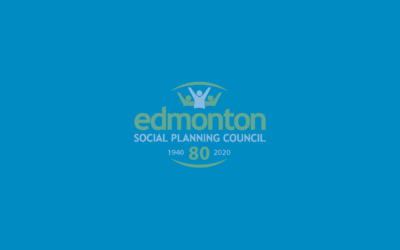For many Alberta families, the 2009-10 recession is already a fading memory. However, for low income Alberta families, the picture is not as bright. So far, there has only been a slight decline in poverty rates for families with children. While unemployment overall has gone down, it is still above pre-recession levels for vulnerable groups such as youth and Aboriginals. Income support caseloads are only falling slowly and are still well above pre-recession levels.
Demands on human services community organizations continue to grow. Available resources from both government and the community are in many cases not keeping pace.
The most positive development during the past year, is the Alberta government’s decision to join other provinces and territories that are working on more comprehensive approaches to reducing poverty and enhancing social inclusion.
This breakthrough occurred due to the hard work of many concerned organizations and individuals.
The Edmonton Social Planning Council and Public Interest Alberta previously co-published three reports, We Can Do Better (2008), We Must Do Better (2009), andTime for Action (2010). The Alberta College of Social Workers joined ESPC and PIA to co-publish last year’s poverty reduction report, In This Together (2011).
The Alberta College of Social Workers and the Parkland Institute recently published a discussion paper called A Social Policy Framework for Alberta: Fairness and Justice for All (2012).
Action to End Poverty in Alberta, a steering committee representing municipalities, social policy organizations, and the social service sector was formed two years ago to champion and lead the development of this comprehensive strategy.
In October 2010, as part of a review of the province’s minimum hourly wage, an all-party committee of the Alberta Legislature unanimously passed the following recommendation:
In February 2012, Vibrant Communities Calgary and Action to End Poverty in Alberta released a report titled Poverty Costs: An Economic Case for a Preventative Poverty Reduction Strategy in Alberta (Briggs & Lee, 2012). This report quantified the cost of poverty in terms of health care, crime, and lost economic opportunity for the first time in Alberta.
In April 2012, during a hard fought provincial election, Premier Alison Redford promised Albertans that if her government was re-elected, they would commit to a 5-year plan to end child poverty and a 10-year plan to end poverty overall (Progressive Conservative Association of Alberta, 2012).
Since the spring election, the Alberta government has commenced work on a Social Policy Framework in which a poverty reduction plan is included. An initial round of public consultations on the framework took place in the summer. A second consultation round is underway with the goal of developing a final framework by the end of 2012 (Government of Alberta, September 2012b).
A wide cross-section of Alberta voluntary organizations are actively participating in shaping the Social Policy Framework. The next few months will be critical in determining whether this framework will end up being simply a statement of good intentions, or include specific policy changes to make Alberta a leader in achieving the promise of eliminating child and family poverty.
F. SOCIAL ISSUES/F.04 POVERTY/Achieving-the-Promise-2012.pdf


